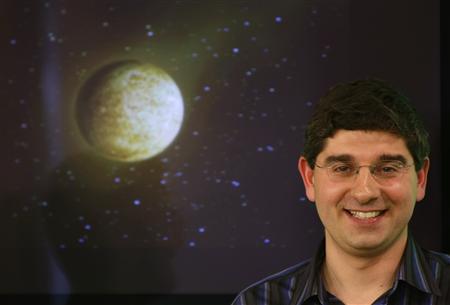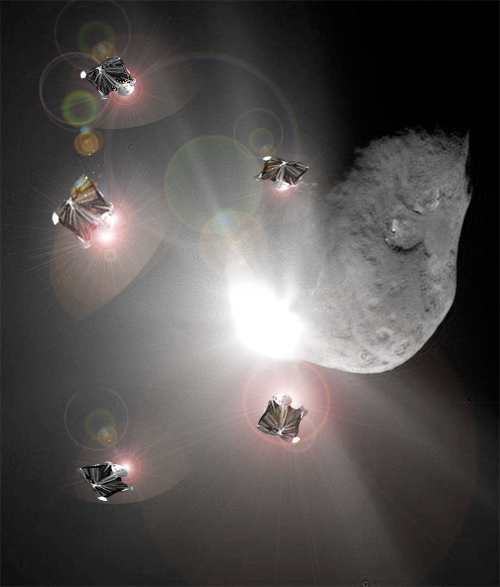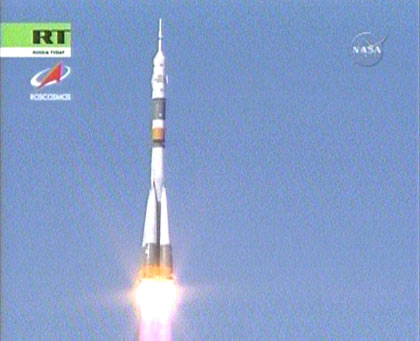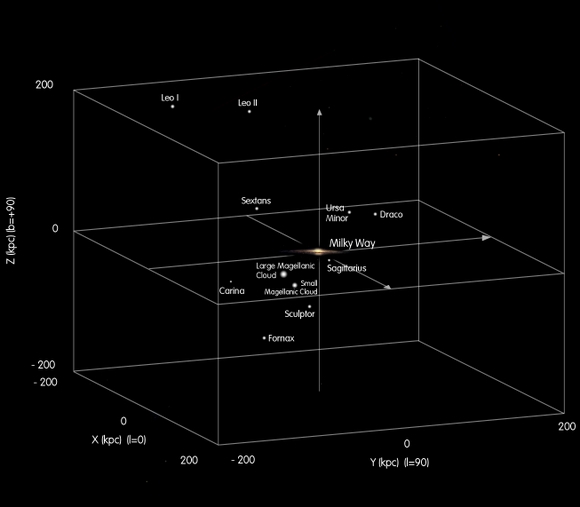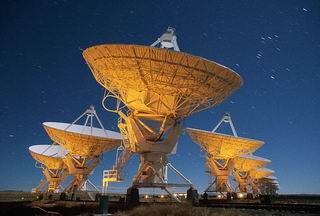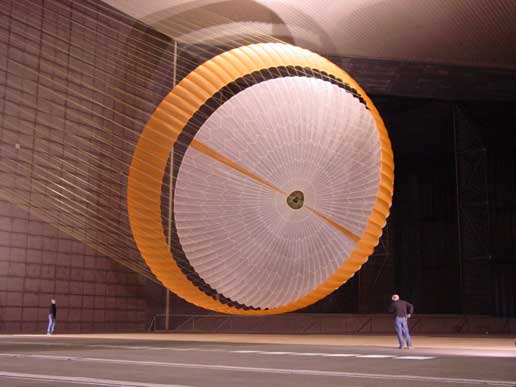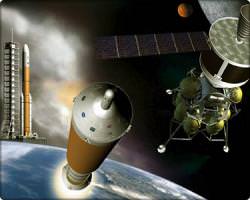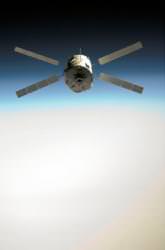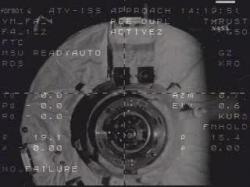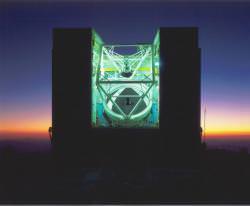According to Newton’s Second Law of Dynamics, objects on the farthest edges of galaxies should have lower velocities than objects near the center. But observations confirm that galaxies rotate with a uniform velocity. Some astronomers believe the orbital behavior of galaxies can be explained more accurately with Modified Newtonian Dynamics (MOND) — a modified version of Newton’s Second Law — than by the rival, but more widely accepted, theory of dark matter. The dark matter theory assumes that a halo of dark matter surrounds each galaxy, providing enough matter (and gravity) that all the stars in a galaxy disc orbit with the same velocity. MOND, however uses a different explanation, and a recent study of eight dwarf galaxies that orbit the Milky Way seems to favor the MOND approach over the dark matter theory.
“MOND was first suggested to account for things that we see in the distant universe,†said Garry Angus, of the University of St Andrews. “This is the first detailed study in which we’ve been able to test out the theory on something close to home. The MOND calculations and the observations appear to agree amazingly well.”
Usually the equation F=ma (force = mass X acceleration) solves your basic acceleration problems. But it doesn’t explain the observed rotation of galaxies. MOND suggests that at low values of acceleration, the acceleration of a particle is not linearly proportional to the force. According to Angus, MOND adds a new constant of nature (a0) to physics, besides the speed of light and Planck’s constant. Above the constant, accelerations are exactly as predicted by Newton’s second law (F=ma). Below it, gravity decays with distance from a mass, rather than distance squared. This constant is so small that it goes unnoticed with the large accelerations that we experience in everyday life. For instance, when we drop a ball the gravity is 100 billion times stronger than a0 and the accelerated motion of the Earth round the Sun is 50 million times stronger. However, when objects are accelerating extremely slowly, as we observe in galaxies or clusters of galaxies, then the constant makes a significant difference to the resulting gravitational forces.
When MOND is applied to nearby dwarf galaxies, one effect is that tidal forces from the Milky Way, which have a negligible effect in classical Newtonian Mechanics, can actually make a big difference. This is particularly significant for the dwarfs orbiting close to our Galaxy.
“In these dwarf galaxies, the internal gravity is very weak compared to the gravity of the Milky Way,” said Angus. “MOND suggests that the Milky Way is a bit like a bank that loans out gravity to nearby dwarf galaxies to make them more stable. However, there are conditions on the loan: if the dwarf galaxies start to approach the bank, the loan is gradually reduced or even cancelled and the dwarfs must pay it back. In two galaxies, we’ve seen what could be signs that they’ve come too close too quickly and are unable to repay the loan fast enough. This appears to have caused disruption to their equilibrium.”
Angus used MOND to calculate the ratio of mass to amount of light emitted by the stars in the dwarf galaxies from the observed random velocities of the stars collected independently. He also calculated the orbital paths of the stars in the dwarf galaxies. In all eight cases, the MOND calculations for the orbits were within predictions. For six of the eight galaxies, the calculations were also a good match to expected values for mass-to-light ratios; however for two galaxies, Sextans and Draco, the ratios were very high, which could well suggest tidal effects. The value for Sextans could also be due to poor quality measurements of the galaxy’s luminosity, which Angus said are improving all the time for these ultra dim objects.
“These tidal effects can be tested by updating the 13 year old luminosity of Sextans and making accurate observations of the orbits of Draco and Sextans around the Milky Way. We also need to carry out some detailed simulations to understand the exact mechanisms of the tidal heating,” said Angus.
If Newton’s gravity holds true, the dark matter needed in the dwarf galaxies has constant density in the center which is contrary to theoretical predictions, which suggest density should rise to the center.
“Even without direct detection, the dark matter theory is difficult to prove or refute and although we may not be able to prove whether MOND is correct, by carrying out these kind of tests we can see if it continues to hold up or if it is definitely ruled out,” said Angus.
Original News Source: Royal Astronomy Society’s National Astronomy Meeting

